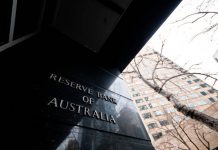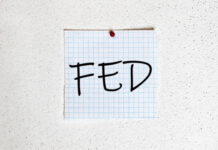Markets
US eco data turned out to be the intraday game-changer, achieving what rather hawkish ECB comments at the central bank’s annual forum in Sintra failed to do. They beat consensus from start to finish. May durable goods orders rose by 1.7% M/M including solid orders for core goods (0.7% M/M). Capital goods shipments, proxy for investment in GDP, followed consensus at 0.2% M/M. Two house price metrics, including the S&P CoreLogic one, showed an accelerating dynamic. New homes sales surged by an annualised 763k in May (vs 675k expected) resulting in a 12.2% M/M increase. It’s the third monthly increase and the biggest number in over a year. Finally, consumer confidence spiked from 102.5 to 109.7 (best since January 2022 and vs 104 expected). Details showed improvements in both the current situation and the future expectations index. Consumers showed more optimistic on growth but anticipate less income in coming months and scaled back spending on big-ticket items. So near-term recession fears are clearly overdone, but a slowdown is still in the making. This creates space for the Fed to implement its June plans to hike at least once and likely twice. US Treasuries sold off, underperforming German Bunds. US yields added up to around 8 bps at the front end of with the curve turning more inverse. German yields followed the US move with yields increasing by 6.7 bps (2-yr) to 1.8 bps (30-yr). (US) stock markets embraced the better eco figures, ending 0.63% (Dow) to 1.65% (Nasdaq) higher. European indices closed 0.5% in the green. Risk sentiment beat relative yield dynamics as main driver in the EUR/USD cross rate with the pair closing at 1.0962 from an open at 1.0906. EUR/GBP copied the move, closing just below the 0.86 big figure. EUR/JPY outperformed, setting a new cycle high at 157.94 (vs open at 156.51).
ECB chief economist Lane this morning kept close to the official policy line: July rate hike very likely, September move too soon to tell and way too early to start discounting rate cuts. Bloomberg runs a story based on sources close to the matter, suggesting that some hawkish ECB officials want to speed up the reduction of its asset portfolio. Two options floated are outright sales from the portfolio and phasing out the reinvestment policy for the Pandemic Emergency Purchase Programme. Today’s eco calendar is light but the Sintra panel discussion with ECB Lagarde, Fed Powell, BoE Bailey and BoJ Ueda makes up for that. We expect a hawkish bias to keep core bonds under pressure.
News and views
Australian inflation dropped substantially more than expected in May, from 6.8% Y/Y to 5.6% Y/Y (vs 6.1% Y/Y consensus). The figure was the slowest since April 2022. The Australian Bureau of Statistics said that prices kept rising for most goods and services, but increases where smaller than in recent months. From a monetary policy point of view the report provided a mixed picture. The decline was mainly driven by auto fuel prices (-6.7% M/M and -8% Y/Y) while core inflation eased only modestly to 6.4% Y/Y in May from 6.5% in April. On a monthly basis, CPI declined 0.4%, after a 0.8% rise in April. At its early June meeting, the Reserve bank of Australia raised its policy rate for a second consecutive meeting after holding a pause in April. At that time it signaled that some further tightening might be needed to be evaluated by incoming data. Today’s data give some comfort, but only a slight decline in the core measure and a very strong May labour market report keep the option for an additional hike next week wide open. The Australian 2-y bond yield this morning declined 5 bps to 4.05%. The Aussie dollar in a first reaction declined from AUD/USD 0.668 to 0.662, but currently again trades near 0.664.
The Chinese yuan stays in the defensive this morning with the USD/CNY cross rate (7.2275) holding near the weakest level against the dollar since November last year. The further (modest) decline of the yuan follows data this morning showing that industrial profits in the country remain under pressure declining 12.6% Y/Y and 18.8 YTD Y/Y, indicating a sluggish demand and ongoing price pressures for goods delivered by Chinese firms. Earlier this week, the PBOC tried to slow the decline of the currency by setting a stronger daily fix for the currency. Today, the PBOC set the daily fixing again more in line with estimates which suggests that it still accepts a modest further decline of the currency if the pace isn’t too aggressive.












